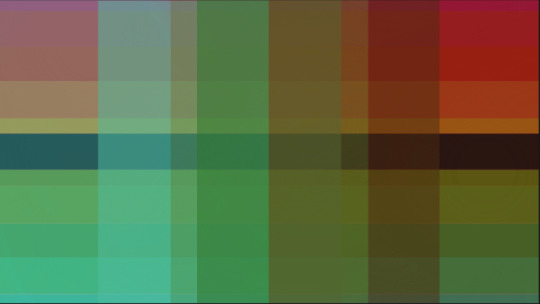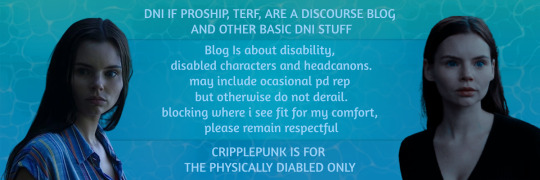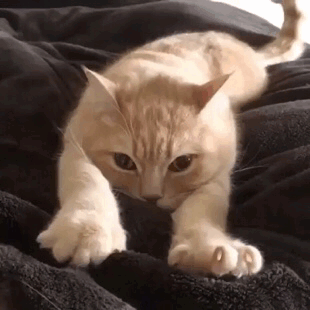#obsessive compulsive pd flag
Text
Custer C Flags remade
[cluster c flags remade]

post one(link) - cluster a(link) - cluster b(link)




Avoidant personality disorder
stone used: ammolite




Dependant personality disorder
stone used: unakite




Obsessive Compulsive personality disorder
stone used: Opal

flags are exclusive to those with the disorders
apologies for the lack of ids due to a lack of spoons
radqueers, transx/id do not touch my flags thanks
tagging: @delightfulweepingwillows, @dpdarchive, @avpdarchive, @docsfallfromgrace, @acetrappolaswife, @clusterrune, @archival-arrival, @decayednightmaremogai



#flag design#flag blog#mod cass#my flags#flag coining#flag making#flag designs#flag redesign#ocd#ocd flag#ocpd#ocpd flag#obsessive compulsive disorder#obsessive compulsive personality disorder#obsessive compulsive pd#dpd#dpd flag#dependant pd flag#dependant personality disorder flag#dependant pd#dependant personality disorder#avoidant pd flag#avoidant personality disorder flag#avpd flag#avoidant pd#avpd#flags#disorders#personality disorder
50 notes
·
View notes
Text
flag list p3
[pt: flag list p3]
personality disorders and empathy levels
flags below cut
cluster a, b and c personality disorder flags:
[pt: cluster a, b and c personality disorder flags:]
all made by us on @/fantasy-store
cluster a, paranoid pd and schizoid pd in order



image one: [id: a flag with 6 horizontal stripes ranging from top to bottom as rusted pink, dusty pink, grey, dusty plum, grey and dark grey. :end id]
image two: [id: a flag with 6 horizontal stripes ranging from top to bottom as dusty yellow, light yellow, light orange, dusty orange, dusty red and dark red. :end id]
image three: [id: a flag with 6 horizontal stripes ranging from top to bottom as purple, light purple, light plum, plum, dusty red and dark red. :end id]
schizotypal pd flag

image four: [id: a flag with 6 horizontal stripes ranging from top to bottom as purple, light purple, light grey, dark purple, medium grey and dark grey. :end id]
cluster b, antisocial pd and borderline pd in order



image five: [id: a flag with 6 horizontal stripes ranging from top to bottom as grey, light grey, grey teal, slate grey, medium grey and dark grey. :end id]
image six: [id: a flag with 6 horizontal striped ranging from top to bottom as grey, light grey, light blue, dusty blue, dark muted blue and dark grey. :end id]
image seven: [id: a flag with 6 horizontal stripes ranging from top to bottom as grey, light grey, light purple, purple, dark muted purple and dark grey. :end id]
histrionic pd and narcissistic pd flags


image eight: [id: a flag with 6 horizontal stripes ranging from top to bottom as grey, light grey, dusty teal, dark teal, medium grey and dark grey. :end id]
image nine: [id: a flag with 6 horizontal stripes ranging from top to bottom as grey, light grey, light red, dusty red, muted dark red and dark grey. :end id]
cluster c, avoidant pd and dependant pd in order



image ten: [id: a flag with 6 horizontal stripes ranging from top to bottom as warm grey, warm light grey, muted light red, muted red, medium red and dark red. :end id]
image eleven: [id: a flag with 6 horizontal stripes ranging from top to bottom as muted periwinkle, periwinkle, grey-green, grey-purple, medium green and dark green. :end id]
image twelve: [id: a flag with 6 horizontal stripes ranging from top to bottom as periwinkle, light periwinkle, purple, medium purple, plum and dark plum. :end id]
obsessive compulsive disorder flag

image thirteen: [id: a flag with 6 horizontal stripes ranging from top to bottom as dusty pink, light pink, light purple, dusty plum, purple and dark purple. :end id]
empathy flag(s), by us on @/fantasy-store
general empathy haver flag

image fourteen: [id: a flag with 5 horizontal stripes raging from top to bottom as grey, grey-purple, dusty purple, muted purple and medium purple as well as 5 squares going up from the bottom left corner to the top right as pale sand, muted sand, grey-sand, sandy-grey and light grey. :end id]
apathy, low/no empathy and fluctuating empathy in order



image fifteen: [id: a flag with 5 horizontal stripes raging from top to bottom as pale olive, light olive, olive, medium olive and dark olive, as well as 5 squares going up from the bottom left corner to the top right as pale purple, light purple, dusty purple, purple and medium purple. :end id]
image sixteen: [id: a flag with 5 horizontal stripes raging from top to bottom as light muted aqua, muted aqua, medium aqua, dark aqua and darker aqua, as well as 5 squares going up from the bottom left corner to the top right as pale peach, orange-peach, light orange, muted orange and medium orange. :end id]
image seventeen: [id: a flag with 5 horizontal stripes raging from top to bottom as warm tan, light brown, brown, medium brown and dark brown, as well as 5 squares going up from the bottom left corner to the top right as pale pink, light pinky purple, light plum, dusty plum, and muted plum. :end id]
hyperempathy flag

image eighteen: [id: a flag with 5 horizontal stripes raging from top to bottom as light caramel, caramel brown, rich caramel, medium caramel and dark caramel, as well as 5 squares going up from the bottom left corner to the top right as pale blue, ice blue, dusty blue, muted blue and blue-grey. :end id]

image nineteen: [id: a banner with a blue to green gradient and water-filtering-light texture under a faintly transparent blue rectangular box. in the box is light blue text that reads "Blog is about disability, disabled characters and headcanons. may include occasional pd rep but otherwise do not derail. blocking where i see fir for my comfort, please remain respectful." on the top of the banner outside the blue box is more light blue text that reads "DNI if proship, terf, are a discourse blog and other basic dni stuff" in all caps. under the blue box at the bottom of the banner is more light blue text that reads "cripplepunk is for the physically disabled only" in all caps. on either side of the banner is an image of ryn from the show siren staring off to the side. :end id]
14 notes
·
View notes
Text
BLOG INTRO …
> hi everyone !! As a person who never sees any support pages/blogs for pwPOCD i thought i’d make this in hopes to spread awareness !!
“What is POCD?”
> POCD is also known as “pedophilic obsessive compulsive disorder”. NO, this does not mean we are pedophiles. We suffer with intrusive thoughts that we cannot control, usually due to childhood trauma.
> the flag in my icon is from here , it’s the POCD awareness flag :)
> question box will ALWAYS be open unless otherwise stated !!! don’t be afraid to send anything in lovelies <333 you are valid !!
> DNI
> “transabled” people. you’re disgusting
> maps/aams/pedos/etc.
> if you demonize ANY PD (bpd, bp, npd, hpd, etc.)
> anyone 15 and under (i am 19 years old and do not want to int with what i consider children. 16 is even pushing it)

3 notes
·
View notes
Note
i've been scrambling to find flags/terms relating to all types of adhd, the same way ive seen a ton of flags for different ocd types/subtypes, same for other disorders (npd, specific delusion types, etc) i feel like it'd be great for people to have flags they can use to specify theyre type! if you could help find something like that id absolutely love it... /not forced
As far as being recognized by psychologists and co., there's only the three subtypes (primarily hyperactive, primarily inattentive aka me, and combined). There's also cognitive disengagement syndrome (formerly sluggish cognitive tempo) which is another attention disorder but not exactly an ADHD subtype, more like a parallel disorder of attention. My OCD subtype flags have all been subtypes that are recognized by clinicians so far. They can be found on NOCD which is a treatment and info site for OCD. There are also clinically recognized subtypes for personality disorders and delusions which is probs what you've seen flags for (although I have seen some PD "archetype" terms/flags but I consider that different from a subtype and more of a way to express yourself than describe symptoms, totally valid though).
That being said I think creating unofficial subtypes of existing conditions is... probably fine? Definitely better than straight up MUDs (for those who haven't gone into radqueer rabbit holes out of morbid curiosity, that means people making up entirely new disorders without any basis in science or any research or anything). But subtypes of existing conditions isn't a thing people besides those in the field of practice are doing yet afaik. I've considered doing this for OCD myself because obsessions and compulsions can be about anything so any number of subtypes exist as long as someone experiences them. But subtypes of things like OCD and phobias are a lot more simple, straightforward, and inherently implied/included under the disorder than it would be for something like ADHD. I think it's probably fine but it would require more consideration than coining a gender or something and individuals should get input from others with the condition. And definitely don't coin subtypes for conditions you don't have (unless you're helping someone who does, I suppose). Trust me, I super super get the appeal especially for those who don't fit the "stereotype" their neurotype has bc that can feel alienating for sure (I actually think this is a core reason why folks feel the need to coin MUDs to describe their exact symptoms, with the other core reason being that people with symptoms unexplainable by any existing condition want a "reason" or "cause" to attribute them to when sometimes people just... have symptoms, on their own, not fitting any diagnosis). Just be careful and considerate, please!
2 notes
·
View notes
Photo

Obsessive-Compulsive Personality Disorder: A mental illness that is characterized by a preoccupation with orderliness, perfectionism, and mental and interpersonal control, at the expense of flexibility, openness, and efficiency. Some medical experts describe it as it as: Individuals that are intellectualized and overly “rational” in their approach to life, are emotionally constricted and rigid, and are critical of themselves and others and conflicted about anger, aggression, and authority.
#ocpd#ocd#pd#personality disorder#obsessive compulsive disorder#mental illness#mad pride#flag#madpride#flags
57 notes
·
View notes
Text
Tags
Mental Illnesses/Disorders & Symptoms
Autism
ADHD
Depression
Maladaptive Daydreaming Disorder
Schizophrenia Spectrum
Schizophrenia
Psychosis
Hallucinations
Delusions
Personality Disorders
Cluster A
Paranoid PD (PPD)
Schizoid PD (SZPD)
Schizotypal (STPD)
Cluster B
Borderline PD (BPD)
Histrionic PD (HPD)
Narcissistic PD (NPD)
Antisocial PD (ASPD)
Cluster C
Avoidant PD (AVPD)
Dependent PD (DPD)
Obsessive-Compulsive PD (OCPD)
Personality Disorder Not Otherwise Specified (PDNOS)
Trauma, (C-) PTSD
Systems (including traumagenic & non-traumagenic)
Dissociative Identity Disorder & Other Specified Dissociative Disorder
Anxiety
Bipolar Disorder (I & II)
Dissociation
OCD
Intrusive thoughts
Identities & Pronouns
Genders
Pronouns
Orientations
All terms
All flags
Misc.
Positivity
Art
Asks
Non-neuroidentities
[about || byf/dni || faq]
103 notes
·
View notes
Text
TMR Analyzes Impact of Outbreak of COVID-19 on Brain Stimulators Market
Brain stimulation therapy is a procedure to treat certain mental disorders. Brain stimulation therapies involve activating or inhibiting brain activity directly with electricity. Electricity is provided directly by invasive or non-invasive brain stimulators placed on the scalp. Brain stimulators investigate the effects of electricity on basic processes such as gene expression and other aspects of molecular biology, neurochemical regulation, functional brain activity, sensorimotor function, and cognitive and affective processes. The stimulation technique uses a probe to outline patterns of neural connectivity in the brain and provides the information of brain activity in the form of graphs. The functioning of brain stimulators depends on battery powered adapter for the display of output on the patient monitor. Moreover, the system incorporates visual indicators of performance in order to provide the physicians an optimal performance. However, new developments in computer technology and rapidly growing cranial stimulation technique allows the scientific community to focus on the best practice within the medical industry, which is paving the way for early diagnosis and treatment of mental diseases.
Read Report Overview: https://www.transparencymarketresearch.com/brain-stimulators-market.html
The global brain stimulators market is driven by rapid development in technology, funding for digital health companies, rise in incidence of neurological disorders, increase in government support for research & development, and adverse effects of present diagnostic & drug therapies. According to the U.S. Food and Drug Administration, deep brain stimulators were approved for treatment of movement disorders such as essential tremor, Parkinson's disease and dystonia, and recently, obsessive-compulsive disorder. Rise in prevalence of Parkinson's disease, epilepsy, dystonia, and other chronic pain is expected to drive the global brain stimulators market. However, long approval time, high cost of research & development and devices, and lack of awareness are factors expected to restrain the global brain stimulators market during the forecast period.
Request a Sample of Brain Stimulators Market: https://www.transparencymarketresearch.com/sample/sample.php?flag=S&rep_id=52701
The global brain stimulators market can be segmented based on product type, end-user, application, and region. In terms of product type, the market can be classified into transcranial magnetic stimulators, electroconvulsive therapy stimulators, deep brain stimulators, and others. Based on application, the global brain stimulators market can be categorized into Parkinson’s disease, essential tremor, dystonia, and others. In December 2017, Boston Scientific Corporation received the U.S. Food and Drug Administration (FDA) approval for the sale of Vercise Deep Brain Stimulation (DBS) System to treat the symptoms of Parkinson’s disease (PD), a degenerative condition that affects more than one million people in the U.S. and 10 million globally. Hence, deep brain stimulators as an invasive device will be more prominently used in the near future. In terms of end-user, the market can be divided into diagnostic laboratories, clinics, hospitals, and others.
Enquiry before Buying Brain Stimulators Market Report - https://www.transparencymarketresearch.com/sample/sample.php?flag=EB&rep_id=52701
Geographically, the global brain stimulators market can be segmented into North America, Europe, Asia Pacific, and Rest of the World. North America dominated the global market due to advanced technology used in medical devices, increase in incidence of mental illnesses among the geriatric population, significant awareness, and high per capita health care expenditure. Early-phase diagnosis, treatment of disease, and after surgery effects drive the biotechnology and medical device market which in turn is expected to propel the brain stimulators market in North America. Europe was the second largest market for brain stimulators due to favorable government policies regarding health care infrastructure, high incidence of brain diseases due to environmental conditions, and awareness programs about different types of brain disorders. The market in Asia Pacific is likely to grow at a rapid pace due to increase in the geriatric population, rise in awareness among people, and increase in per capita expenditure. Additionally, economic growth supports improvement in health care infrastructure in developing countries such as India, China, Brazil, and South Africa. Hence, these factors are expected to contribute to the growth of the brain stimulators market in Asia Pacific and Rest of the World.
Pre-book Brain Stimulators Market Report - https://www.transparencymarketresearch.com/checkout.php?rep_id=52701<ype=S
Major players operating in the global brain stimulators market include Medtronic plc, Boston Scientific Corporation, Abbott Laboratories, Aleva Neurotherapeutics SA, Deep Brain Innovations, LLC, and SceneRay.
More Trending Reports by Transparency Market Research:
https://www.prnewswire.com/news-releases/rapid-digitalization-rise-in-awareness-regarding-copd-treatments-to-drive-copd-drug-delivery-devices-market-says-tmr-301356815.html
https://www.prnewswire.co.uk/news-releases/increase-in-demand-for-treatment-of-venous-thromboembolism-to-boost-global-unfractionated-heparin-market-says-tmr-897429570.html
https://www.prnewswire.com/news-releases/intravascular-ultrasound-ivus-devices-market-gains-from-rise-in-diagnosis-of-complex-cto-lesions-finds-tmr-301361488.html
About Us
Transparency Market Research is a global market intelligence company, providing global business information reports and services. Our exclusive blend of quantitative forecasting and trends analysis provides forward-looking insight for thousands of decision makers. Our experienced team of analysts, researchers, and consultants, uses proprietary data sources and various tools and techniques to gather and analyze information.
Our data repository is continuously updated and revised by a team of research experts, so that it always reflects the latest trends and information. With a broad research and analysis capability, Transparency Market Research employs rigorous primary and secondary research techniques in developing distinctive data sets and research material for business reports.
Contact
Transparency Market Research,
90 State Street, Suite 700,
Albany, NY 12207
Tel: +1-518-618-1030
USA - Canada Toll Free: 866-552-3453
Website: https://www.transparencymarketresearch.com/
0 notes
Text
Brain Stimulators Market Competitive Landscape Analysis with Forecast by 2026
Brain stimulation therapy is a procedure to treat certain mental disorders. Brain stimulation therapies involve activating or inhibiting brain activity directly with electricity. Electricity is provided directly by invasive or non-invasive brain stimulators placed on the scalp. Brain stimulators investigate the effects of electricity on basic processes such as gene expression and other aspects of molecular biology, neurochemical regulation, functional brain activity, sensorimotor function, and cognitive and affective processes. The stimulation technique uses a probe to outline patterns of neural connectivity in the brain and provides the information of brain activity in the form of graphs. The functioning of brain stimulators depends on battery powered adapter for the display of output on the patient monitor. Moreover, the system incorporates visual indicators of performance in order to provide the physicians an optimal performance. However, new developments in computer technology and rapidly growing cranial stimulation technique allows the scientific community to focus on the best practice within the medical industry, which is paving the way for early diagnosis and treatment of mental diseases.
Read Report Overview:
https://www.transparencymarketresearch.com/brain-stimulators-market.html
Brain stimulation therapy is a procedure to treat certain mental disorders. Brain stimulation therapies involve activating or inhibiting brain activity directly with electricity. Electricity is provided directly by invasive or non-invasive brain stimulators placed on the scalp. Brain stimulators investigate the effects of electricity on basic processes such as gene expression and other aspects of molecular biology, neurochemical regulation, functional brain activity, sensorimotor function, and cognitive and affective processes. The stimulation technique uses a probe to outline patterns of neural connectivity in the brain and provides the information of brain activity in the form of graphs. The functioning of brain stimulators depends on battery powered adapter for the display of output on the patient monitor. Moreover, the system incorporates visual indicators of performance in order to provide the physicians an optimal performance. However, new developments in computer technology and rapidly growing cranial stimulation technique allows the scientific community to focus on the best practice within the medical industry, which is paving the way for early diagnosis and treatment of mental diseases.
The global brain stimulators market is driven by rapid development in technology, funding for digital health companies, rise in incidence of neurological disorders, increase in government support for research & development, and adverse effects of present diagnostic & drug therapies. According to the U.S. Food and Drug Administration, deep brain stimulators were approved for treatment of movement disorders such as essential tremor, Parkinson's disease and dystonia, and recently, obsessive-compulsive disorder. Rise in prevalence of Parkinson's disease, epilepsy, dystonia, and other chronic pain is expected to drive the global brain stimulators market. However, long approval time, high cost of research & development and devices, and lack of awareness are factors expected to restrain the global brain stimulators market during the forecast period.
The global brain stimulators market can be segmented based on product type, end-user, application, and region. In terms of product type, the market can be classified into transcranial magnetic stimulators, electroconvulsive therapy stimulators, deep brain stimulators, and others. Based on application, the global brain stimulators market can be categorized into Parkinson’s disease, essential tremor, dystonia, and others. In December 2017, Boston Scientific Corporation received the U.S. Food and Drug Administration (FDA) approval for the sale of Vercise Deep Brain Stimulation (DBS) System to treat the symptoms of Parkinson’s disease (PD), a degenerative condition that affects more than one million people in the U.S. and 10 million globally. Hence, deep brain stimulators as an invasive device will be more prominently used in the near future. In terms of end-user, the market can be divided into diagnostic laboratories, clinics, hospitals, and others.
Geographically, the global brain stimulators market can be segmented into North America, Europe, Asia Pacific, and Rest of the World. North America dominated the global market due to advanced technology used in medical devices, increase in incidence of mental illnesses among the geriatric population, significant awareness, and high per capita health care expenditure. Early-phase diagnosis, treatment of disease, and after surgery effects drive the biotechnology and medical device market which in turn is expected to propel the brain stimulators market in North America. Europe was the second largest market for brain stimulators due to favorable government policies regarding health care infrastructure, high incidence of brain diseases due to environmental conditions, and awareness programs about different types of brain disorders. The market in Asia Pacific is likely to grow at a rapid pace due to increase in the geriatric population, rise in awareness among people, and increase in per capita expenditure. Additionally, economic growth supports improvement in health care infrastructure in developing countries such as India, China, Brazil, and South Africa. Hence, these factors are expected to contribute to the growth of the brain stimulators market in Asia Pacific and Rest of the World.
Request Brochure of the Report:
https://www.transparencymarketresearch.com/sample/sample.php?flag=B&rep_id=52701
Major players operating in the global brain stimulators market include Medtronic plc, Boston Scientific Corporation, Abbott Laboratories, Aleva Neurotherapeutics SA, Deep Brain Innovations, LLC, and SceneRay.
About us
Transparency Market Research is a global market intelligence company, providing global business information reports and services. Our exclusive blend of quantitative forecasting and trends analysis provides forward-looking insight for thousands of decision makers. Our experienced team of Analysts, Researchers, and Consultants, use proprietary data sources and various tools and techniques to gather, and analyze information.
Our data repository is continuously updated and revised by a team of research experts, so that it always reflects the latest trends and information. With a broad research and analysis capability, Transparency Market Research employs rigorous primary and secondary research techniques in developing distinctive data sets and research material for business reports.
Contact
Transparency Market Research
90 Sate Street, Suite 700
Albany, NY 12207
Tel: +1-518-618-1030
USA - Canada Toll Free: 866-552-3453
Email: [email protected]
Website: https://www.transparencymarketresearch.com/
0 notes
Text
Brain Stimulators Market to Develop Rapidly by 2026
Brain stimulation therapy is a procedure to treat certain mental disorders. Brain stimulation therapies involve activating or inhibiting brain activity directly with electricity. Electricity is provided directly by invasive or non-invasive brain stimulators placed on the scalp. Brain stimulators investigate the effects of electricity on basic processes such as gene expression and other aspects of molecular biology, neurochemical regulation, functional brain activity, sensorimotor function, and cognitive and affective processes. The stimulation technique uses a probe to outline patterns of neural connectivity in the brain and provides the information of brain activity in the form of graphs. The functioning of brain stimulators depends on battery powered adapter for the display of output on the patient monitor. Moreover, the system incorporates visual indicators of performance in order to provide the physicians an optimal performance. However, new developments in computer technology and rapidly growing cranial stimulation technique allows the scientific community to focus on the best practice within the medical industry, which is paving the way for early diagnosis and treatment of mental diseases.
The global brain stimulators market is driven by rapid development in technology, funding for digital health companies, rise in incidence of neurological disorders, increase in government support for research & development, and adverse effects of present diagnostic & drug therapies. According to the U.S. Food and Drug Administration, deep brain stimulators were approved for treatment of movement disorders such as essential tremor, Parkinson's disease and dystonia, and recently, obsessive-compulsive disorder. Rise in prevalence of Parkinson's disease, epilepsy, dystonia, and other chronic pain is expected to drive the global brain stimulators market. However, long approval time, high cost of research & development and devices, and lack of awareness are factors expected to restrain the global brain stimulators market during the forecast period.
The global brain stimulators market can be segmented based on product type, end-user, application, and region. In terms of product type, the market can be classified into transcranial magnetic stimulators, electroconvulsive therapy stimulators, deep brain stimulators, and others. Based on application, the global brain stimulators market can be categorized into Parkinson’s disease, essential tremor, dystonia, and others. In December 2017, Boston Scientific Corporation received the U.S. Food and Drug Administration (FDA) approval for the sale of Vercise Deep Brain Stimulation (DBS) System to treat the symptoms of Parkinson’s disease (PD), a degenerative condition that affects more than one million people in the U.S. and 10 million globally. Hence, deep brain stimulators as an invasive device will be more prominently used in the near future. In terms of end-user, the market can be divided into diagnostic laboratories, clinics, hospitals, and others.
Request to View Brochure of Report -
https://www.transparencymarketresearch.com/sample/sample.php?flag=B&rep_id=52701
Geographically, the global brain stimulators market can be segmented into North America, Europe, Asia Pacific, and Rest of the World. North America dominated the global market due to advanced technology used in medical devices, increase in incidence of mental illnesses among the geriatric population, significant awareness, and high per capita health care expenditure. Early-phase diagnosis, treatment of disease, and after surgery effects drive the biotechnology and medical device market which in turn is expected to propel the brain stimulators market in North America. Europe was the second largest market for brain stimulators due to favorable government policies regarding health care infrastructure, high incidence of brain diseases due to environmental conditions, and awareness programs about different types of brain disorders. The market in Asia Pacific is likely to grow at a rapid pace due to increase in the geriatric population, rise in awareness among people, and increase in per capita expenditure. Additionally, economic growth supports improvement in health care infrastructure in developing countries such as India, China, Brazil, and South Africa. Hence, these factors are expected to contribute to the growth of the brain stimulators market in Asia Pacific and Rest of the World.
Major players operating in the global brain stimulators market include Medtronic plc, Boston Scientific Corporation, Abbott Laboratories, Aleva Neurotherapeutics SA, Deep Brain Innovations, LLC, and SceneRay.
Request to View ToC of the report -
https://www.transparencymarketresearch.com/sample/sample.php?flag=T&rep_id=52701
0 notes
Text
Brain Stimulators Market Will Generate New Growth Opportunities By 2026
Brain stimulation therapy is a procedure to treat certain mental disorders. Brain stimulation therapies involve activating or inhibiting brain activity directly with electricity. Electricity is provided directly by invasive or non-invasive brain stimulators placed on the scalp. Brain stimulators investigate the effects of electricity on basic processes such as gene expression and other aspects of molecular biology, neurochemical regulation, functional brain activity, sensorimotor function, and cognitive and affective processes. The stimulation technique uses a probe to outline patterns of neural connectivity in the brain and provides the information of brain activity in the form of graphs. The functioning of brain stimulators depends on battery powered adapter for the display of output on the patient monitor. Moreover, the system incorporates visual indicators of performance in order to provide the physicians an optimal performance. However, new developments in computer technology and rapidly growing cranial stimulation technique allows the scientific community to focus on the best practice within the medical industry, which is paving the way for early diagnosis and treatment of mental diseases.
Read Report Overview:
https://www.transparencymarketresearch.com/brain-stimulators-market.html
Brain stimulation therapy is a procedure to treat certain mental disorders. Brain stimulation therapies involve activating or inhibiting brain activity directly with electricity. Electricity is provided directly by invasive or non-invasive brain stimulators placed on the scalp. Brain stimulators investigate the effects of electricity on basic processes such as gene expression and other aspects of molecular biology, neurochemical regulation, functional brain activity, sensorimotor function, and cognitive and affective processes. The stimulation technique uses a probe to outline patterns of neural connectivity in the brain and provides the information of brain activity in the form of graphs. The functioning of brain stimulators depends on battery powered adapter for the display of output on the patient monitor. Moreover, the system incorporates visual indicators of performance in order to provide the physicians an optimal performance. However, new developments in computer technology and rapidly growing cranial stimulation technique allows the scientific community to focus on the best practice within the medical industry, which is paving the way for early diagnosis and treatment of mental diseases.
The global brain stimulators market is driven by rapid development in technology, funding for digital health companies, rise in incidence of neurological disorders, increase in government support for research & development, and adverse effects of present diagnostic & drug therapies. According to the U.S. Food and Drug Administration, deep brain stimulators were approved for treatment of movement disorders such as essential tremor, Parkinson's disease and dystonia, and recently, obsessive-compulsive disorder. Rise in prevalence of Parkinson's disease, epilepsy, dystonia, and other chronic pain is expected to drive the global brain stimulators market. However, long approval time, high cost of research & development and devices, and lack of awareness are factors expected to restrain the global brain stimulators market during the forecast period.
The global brain stimulators market can be segmented based on product type, end-user, application, and region. In terms of product type, the market can be classified into transcranial magnetic stimulators, electroconvulsive therapy stimulators, deep brain stimulators, and others. Based on application, the global brain stimulators market can be categorized into Parkinson’s disease, essential tremor, dystonia, and others. In December 2017, Boston Scientific Corporation received the U.S. Food and Drug Administration (FDA) approval for the sale of Vercise Deep Brain Stimulation (DBS) System to treat the symptoms of Parkinson’s disease (PD), a degenerative condition that affects more than one million people in the U.S. and 10 million globally. Hence, deep brain stimulators as an invasive device will be more prominently used in the near future. In terms of end-user, the market can be divided into diagnostic laboratories, clinics, hospitals, and others.
Geographically, the global brain stimulators market can be segmented into North America, Europe, Asia Pacific, and Rest of the World. North America dominated the global market due to advanced technology used in medical devices, increase in incidence of mental illnesses among the geriatric population, significant awareness, and high per capita health care expenditure. Early-phase diagnosis, treatment of disease, and after surgery effects drive the biotechnology and medical device market which in turn is expected to propel the brain stimulators market in North America. Europe was the second largest market for brain stimulators due to favorable government policies regarding health care infrastructure, high incidence of brain diseases due to environmental conditions, and awareness programs about different types of brain disorders. The market in Asia Pacific is likely to grow at a rapid pace due to increase in the geriatric population, rise in awareness among people, and increase in per capita expenditure. Additionally, economic growth supports improvement in health care infrastructure in developing countries such as India, China, Brazil, and South Africa. Hence, these factors are expected to contribute to the growth of the brain stimulators market in Asia Pacific and Rest of the World.
Request Brochure of the Report:
https://www.transparencymarketresearch.com/sample/sample.php?flag=B&rep_id=52701
Major players operating in the global brain stimulators market include Medtronic plc, Boston Scientific Corporation, Abbott Laboratories, Aleva Neurotherapeutics SA, Deep Brain Innovations, LLC, and SceneRay.
About us
Transparency Market Research is a global market intelligence company, providing global business information reports and services. Our exclusive blend of quantitative forecasting and trends analysis provides forward-looking insight for thousands of decision makers. Our experienced team of Analysts, Researchers, and Consultants, use proprietary data sources and various tools and techniques to gather, and analyze information.
Our data repository is continuously updated and revised by a team of research experts, so that it always reflects the latest trends and information. With a broad research and analysis capability, Transparency Market Research employs rigorous primary and secondary research techniques in developing distinctive data sets and research material for business reports.
Contact
Transparency Market Research
90 Sate Street, Suite 700
Albany, NY 12207
Tel: +1-518-618-1030
USA - Canada Toll Free: 866-552-3453
Email: [email protected]
Website: https://www.transparencymarketresearch.com/
0 notes